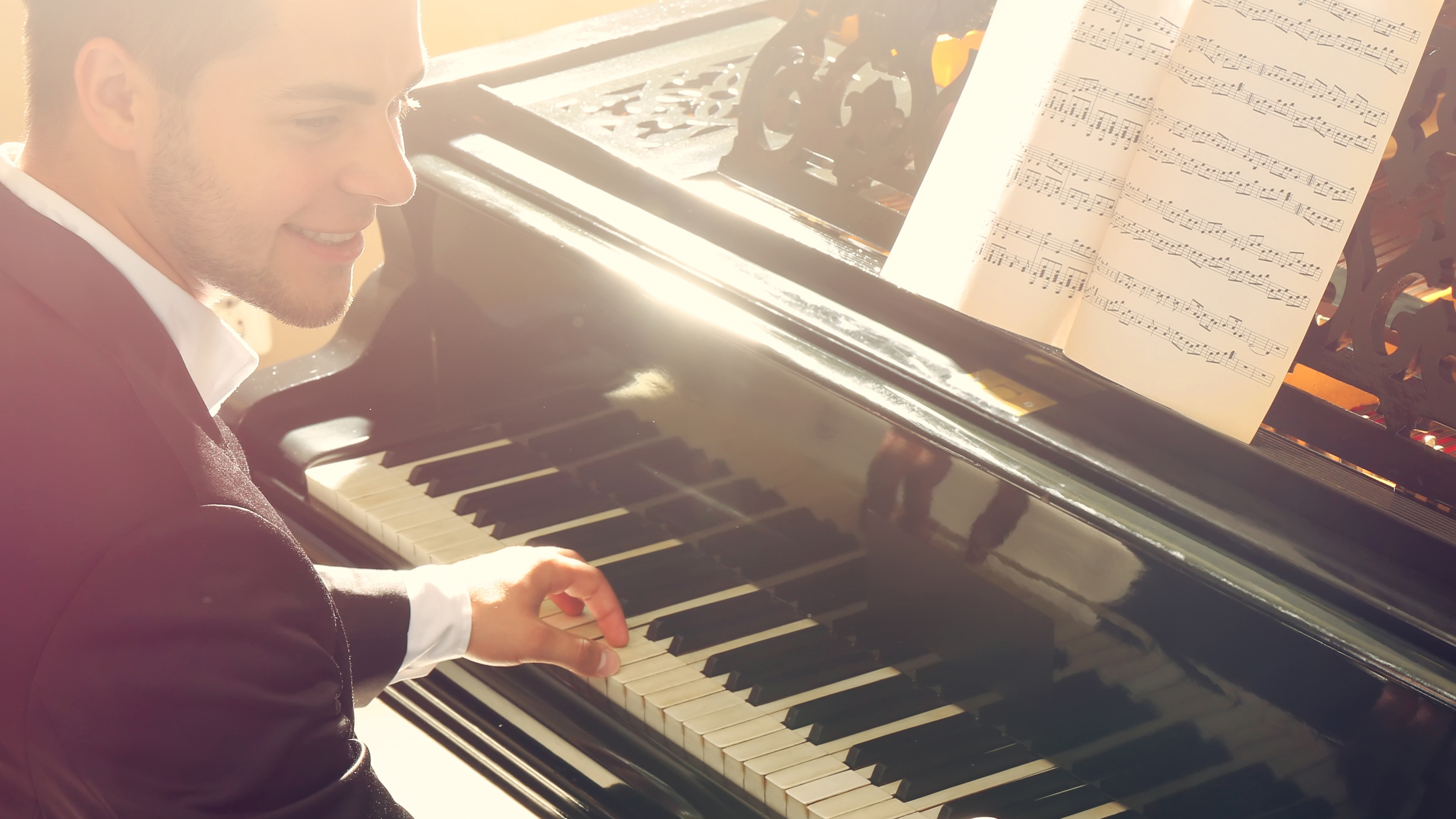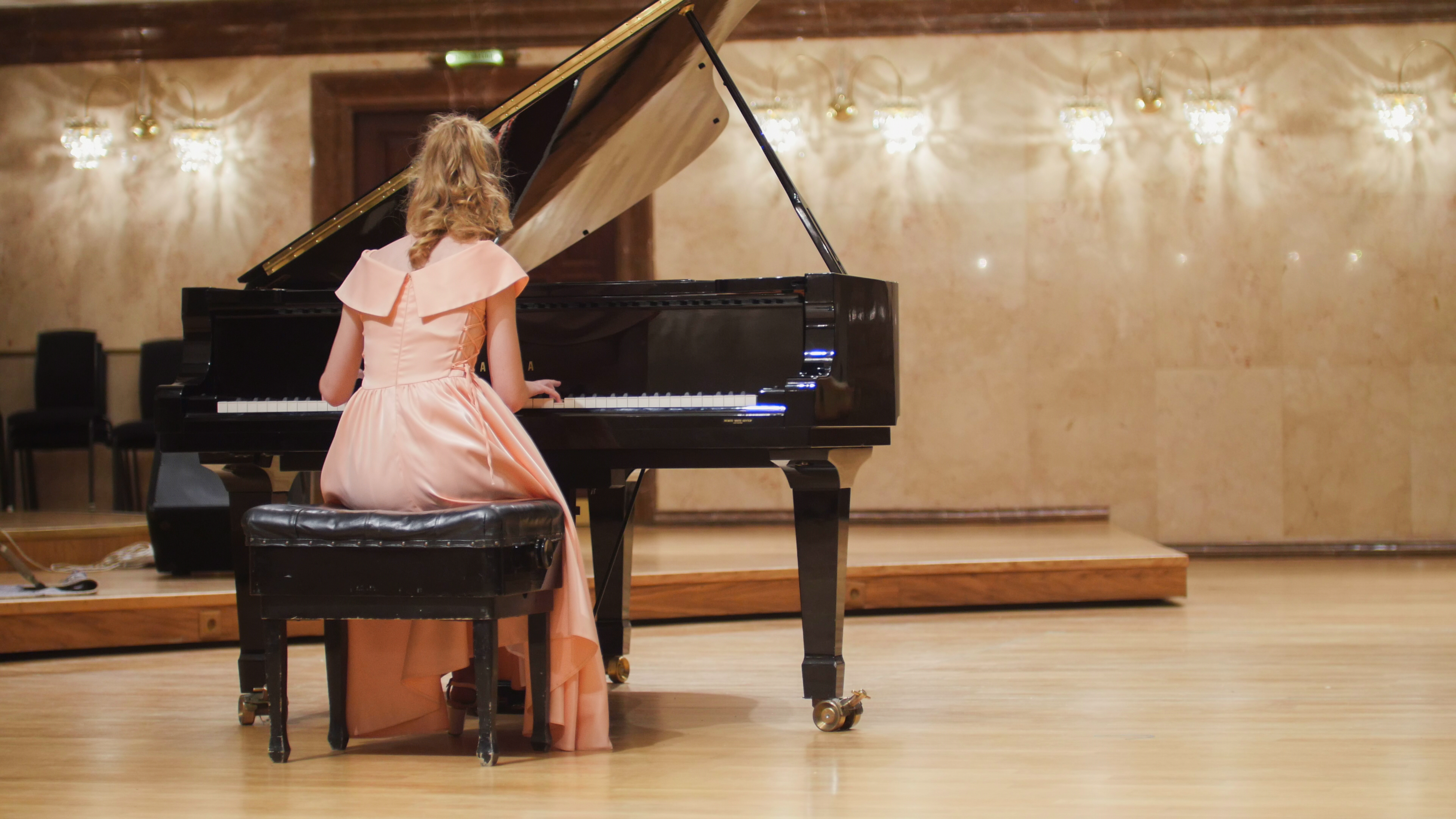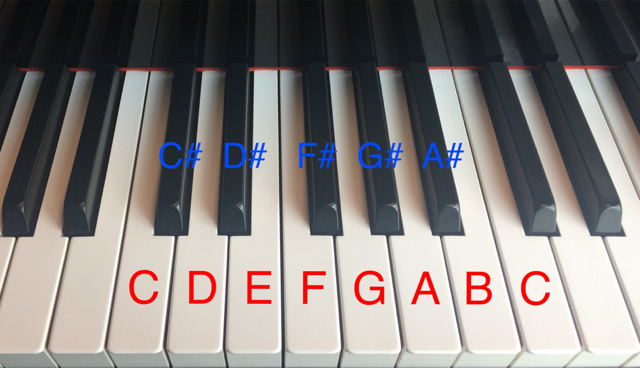Learn to Play the Piano
Do you dream about learning to play the piano? Here at MusicTeachers, we want to help you have a smooth start. Read on for information and tips to help your journey begin.
Most people know how to make a piano produce a sound. However, there is quite a difference between hammering down the white keys and coordinating two distinct rhythms in the right and left hand, while using a foot to control the pedals. Although the piano - and the grand piano in particular - may seem large and overwhelming, the path to playing simple melodies and beautiful chords is thankfully not long.
We have made this guide to learning to play the piano so that you can quickly gain a basic understanding of the instrument. You will also receive tips on how to find the right piano teacher for you. Take a look at our guide How to Choose a Music Teacher if you are ready to get started with piano lessons right away.
Take a look at all of our qualified piano teachers here if you are ready to get started!

Table Of Contents
Different Styles of Piano, from Classical to Pop
Are you excited to start learning piano? One of the greatest things about learning to play the piano is its versatility. Today, the piano is present in almost all genres of music, from classical, to pop, jazz, and even in some genres of metal. The piano has always been, and still is, the favoured instrument of classical composers, especially when it comes to writing and arranging new music. This is primarily due to the piano's ability to play several voices at the same time, but also its timeless sound, which tends to give everything played a "classical" sound.
At the other end of the spectrum, we have contemporary piano, which brings to mind everything from jazz jammers and pop pianists to songwriters and synth players. Whether it is for providing background accompaniment or stepping into the spotlight as an instrument for soloing, the piano is as popular as ever.


Anatomy Of The Piano
The piano consists of a number of black and white keys, as well as some pedals located by the player's feet. When the player presses a key, the sound is produced by a small hammer hitting a string inside the piano.
The keys on a piano can be likened to those on a computer - they each represent a letter or, in the case of the piano, a note. Between each key, there is a 'semitone', also known as a half-note. There are only 12 notes on a piano, which are then repeated every 8th white note.

In this picture, you can see the names of the notes. The notes written in blue can be written with a "#" (called a "sharp"), as seen in the picture, or with a "♭" (called a "flat"). Sharps and flats are known as "accidentals".
A # means that a note is raised by a semitone, and a ♭ means that a note is lowered by a semitone. So a C# is one semitone lower than a C, and a D♭ is one semi-tone lower than a D. However, this is the same note on the piano in both cases.
Every key on the keyboard has a basic sound when you press the key. The note rings out longer if you keep the key pressed down, and it stops once you release the key. However, there is another way of controlling the length of the note.
When you are sitting at the piano, you will have one to three pedals at your feet. Most pianos will have two pedals as a standard. These are the sustain pedal (on your right) and the damper pedal (on your left). The sustain pedal will let the notes you play ring out, even if you let go of the keys, and they will keep ringing until you release the pedal. The damper pedal dampens the volume of your playing.
Chords
It is possible to play chords - groupings of multiple notes played at the same time. In songbooks, it is common to see letters written above the musical notation. These reference the names of the chords to be played with the melody. In the example below, the "C" refers to the chord C major, and not to the note C. These are known as chord symbols.

A chord can be composed of many notes, although it should at a minimum have three chords. The name of the chord is determined by the notes included. The first chords you will learn are triads, which you can learn more about on our blog explaining the structure of triads.
If you already know about triads, check our guides to basic piano chords and chord inversions.
Buying A Piano
When buying a piano, you should consider if you would prefer an acoustic or digital piano. For beginners, normally a digital piano is easier; they are generally cheaper, easier to transport, and less of a commitment than an acoustic piano. Read more about the pros and cons of acoustic or digital here.
Pro Tips For Beginners
1. Practise - the Key to Success on the Piano
You will gain more from practising ten minutes every day, than you will by practising for one hour, once a week. Daily practising also helps condition your fingers.
2. Play from the Heart
It may sound like a cliché but the most important thing when learning the piano is to not lose sight of what made you want to learn in the first place. Follow that feeling you get when you hear the piano played beautifully, and strive for that. Enjoy playing - play something you like to play! Don't worry too much about what you're trying to achieve and stay relaxed – playing the piano should always be fun.
3. Use Your Hands Correctly
It's really important to use your hands correctly to get the best possible sound from the piano. Technique is also important for avoiding injuries and strains when playing and practising. It often takes time to adjust and you have to be prepared for this. Using one of our great piano tutors is the best way to ensure technique is embedded from day one! The right piano teacher will be able to make this process fun and enjoyable - just like learning to play the piano should be! Your piano lessons should be something you really look forward to in the week. Practice is the same, piano lessons with a professional piano teacher should ensure that there is a strong connection between the work you do at home and the piano lesson themselves.
4. Remember To Take Breaks
Learning to play the piano means learning to play without tensing your wrists, forearms, elbows and shoulders. If you feel discomfort in your hands or arms, make sure to take a break. While you may find your limbs getting tired quickly to begin with, you will be surprised at how quickly your body gets used to it.
5. Be Patient!
Take a leap into something difficult – and divide it into smaller pieces. Start by playing just the right-hand part. Then try just the left hand. Finally, put both parts together! Ask your piano teacher for help in breaking down your favourite piece in this way.
Find A Great Piano Teacher
It is proven that learning a musical instrument can be extremely beneficial for a child’s development due to increased concentration, focus and patience, improved cognitive skills and social abilities as well as boosted self-esteem! A good piano teacher is more than just a teacher for the instrument, they can become your child’s coach as well.
Do you want to learn how to play the piano? Maybe you already know, but you want to improve your abilities? We have lots of talented and experienced teachers all over the country. Find a teacher in your city today!
See all of our qualified piano teachers here!
If you thought this article was useful, you might also find the following interesting…
-
The Upright Piano - The common piano found in homes across the U.K.
-
Learn how to play some of the most basic chords on the piano
Who Are We?
The office team of MusicTeachers are all professional musicians and educators. We also believe that we have the best job in the world. We get to spend our day talking to students across the country about how much they love music and we have helped hundreds of people connect with the perfect, professional tutor for them. We'd love to help you too! Please get in touch with us and tell us your story. Call us at 07946125613 or email [email protected]. We can't wait to hear from you!
